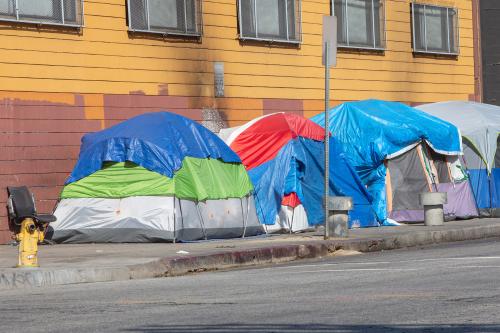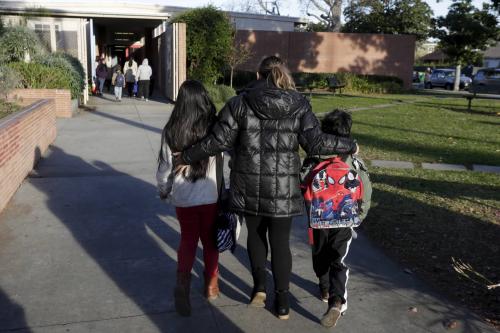Segregation is a disaster for the poor. It crushes upward mobility by cutting off resources to essential public goods like quality education. Yet, in almost every city and metropolitan municipality there is a strong entrenched group committed to using political regulations to perpetuate segregation. These people are more commonly known as homeowners.
Case in point: Lucas Valley
Take Lucas Valley California, a small affluent municipality in Marin County, part of the San Francisco metropolitan area. A typical home costs $777,000 in Lucas Valley, compared to $177,000 for the United States. In December 2014, county officials released a development plan showing substantial housing affordability problems for middle and low-income families. That document cites zoning restrictions and local oppositions as barriers to more affordable housing.
Enter famous filmmaker George Lucas, who recently announced plans to create 224 affordable housing units, set aside for seniors and families making between $65,000 and $100,000 per year. In one of the most expensive areas on earth, many reasonable people would agree that more housing—and especially affordable housing—is just what the county needs.
The dark side of local politics
A number of residents are not happy. Expect legal action. Even before Lucas’s announcement, the Lucas Valley Homeowner’s Association was formed to oppose “high density development.” Likewise, the Marin Community Alliance was formed “to protect and preserve the character” of the area.
This response is sadly typical. Since zoning’s modern origins in the 1920s, homeowner associations and other groups have banded together to keep racial minorities and non-affluent people out of their suburban municipalities and neighborhoods, as a number of historians have documented.
Five (false) reasons for opposing affordable housing
In town meetings, legal documents, and interviews, anti-density campaigners employ a number of rationales to justify their position.
- Amenities: Residents prefer to look at undeveloped land or stately homes rather than apartment buildings, which might spoil their view.
- Environmental concerns: Higher density housing is more energy efficient, but anti-density homeowners use environmental regulations and concerns as a tool to block construction.
- Traffic: From a metropolitan perspective, density can increase the efficiency and ease of commuting patterns, but local residents don’t want more cars on their roads.
- Taxes: Dense development shifts revenue needs from one part of a metropolitan area to the place being developed and as the population grows, so does demand for local government services.
- Poor people: A legacy of racism has perpetuated negative stereotypes of poor people, and these are often embraced by opponents of affordable housing.
SCOTUS’ new “disparate impact” ruling: A mixed blessing
Last week’s U.S. Supreme Court case held that “artificial, arbitrary, and unnecessary barriers” that result in measurable harm to minorities (i.e., “disparate impact”) in terms of access to housing are unlawful under the Fair Housing Act. This includes zoning laws that “function unfairly to exclude minorities from certain neighborhoods without any sufficient justification.” This looks like a victory against zoning, but we should not count on it. The liberal justices in the majority also allowed that “subjective” factors, such as architectural preservation, that contribute to a community’s “quality of life” can be legitimate justifications for exclusionary zoning, whatever their impact.
Let market forces be with you
The politics of zoning creates strange bedfellows. Liberals, distrustful of the profit motivations of developers and empowering of public officials, join forces with conservatives who oppose government-mandated affordable housing because of its redistributive character.
On the other side, advocates for the poor can join forces with libertarians who respect markets and property rights. After all, George Lucas, or any property owner, should have the right to realize the full value of his or her land by selling it to a developer of higher-density housing or be free to use the land charitably. Property rights are more fundamental than an individual’s desire to live with a scenic view in a low-density enclave by controlling the property of others. Most important, lower-income families see their own opportunities and quality of life diminished by segregation and exclusion. Let’s hope Mr Lucas prevails.



Commentary
Zoning out the poor: Skywalker Ranch edition
July 1, 2015